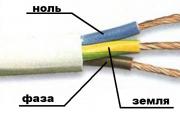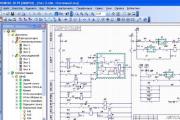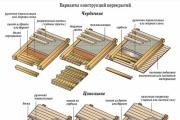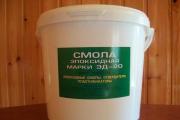Terms of reference for the development of an information system. Terms of reference for the creation of an information system
Technical task to create information system
Based on GOST 34.602-89
for writing technical specifications for automated systems management dated 01.01.1990.
1. GENERAL PROVISIONS
1.1. TK is the main document that defines the requirements and procedure for creating (development or modernization - hereinafter referred to as creation) of an information system (hereinafter referred to as IS), in accordance with which the development of IS is carried out and its acceptance upon commissioning.
1.2. TK is developed for the system as a whole, designed to work independently or as part of another system.
1.3. The requirements for IP in the scope established by this standard can be included in the assignment for the design of a newly created informatization object. In this case, TK is not developed.
1.4. The requirements included in the TOR must correspond to the current level of development of information technologies and not be inferior to similar requirements for the best modern domestic and foreign analogues. The requirements specified in the TOR should not limit the system developer in the search and implementation of the most effective technical, feasibility and other solutions.
1.5. The TOR includes only those requirements that supplement the requirements for systems of this type and are determined by the specifics of the particular object for which the system is being created.
1.6. Changes to the TOR are formalized by an addendum or a protocol signed by the customer and the developer. The addendum or the specified protocol is an integral part of the TOR on the IP. On the title page of the TK there should be an entry “Valid from ...”.
2. COMPOSITION AND CONTENT
2.1. The TOR contains the following sections, which can be divided into subsections:
general information;
purpose and goals of creation (development) of the system;
characteristics of objects;
system requirements;
procedure for control and acceptance of the system;
requirements for the composition and content of work to prepare the development object for putting the system into operation;
documentation requirements;
development sources.
Applications may be included in the ToR.
2.2. Depending on the type, purpose, specific features of the project and the operating conditions of the system, it is allowed to draw up sections of the TOR in the form of applications, introduce additional, exclude or combine subsections of the TOR.
The TOR for parts of the system does not include sections that duplicate the content of the sections of the TOR as a whole.
2.3. In the section "General information" indicate:
full name of the system and its symbol;
topic cipher or cipher (number) of the contract;
the name of the companies of the developer and the customer (user) of the system and their details;
a list of documents on the basis of which the system is created, by whom and when these documents were approved;
planned dates for the beginning and completion of work on the creation of the system;
information about the sources and procedure for financing the work;
the procedure for formalizing and presenting to the customer the results of work on the creation of the system (its parts), on the manufacture and adjustment of individual means (hardware, software, information) and software and hardware (software and methodological) complexes of the system.
2.4. The section “Purpose and objectives of the creation (development) of the system” consists of subsections:
purpose of the system;
the purpose of the system.
2.4.1. In the “Purpose of the system” subsection, indicate the type of system activity (management, design, etc.) and the list of informatization objects (objects) on which it is supposed to be used.
2.4.2. In the subsection “Goals of creating a system”, the names and required values of technical, technological, production-economic or other indicators of the informatization object that must be achieved as a result of creating an IS are given, and indicate the criteria for assessing the achievement of the goals of creating a system.
2.5. In the section “Characteristics of the object of informatization” they give:
brief information about the informatization object or links to documents containing such information;
information about the operating conditions of the automation object.
2.6. The System Requirements section consists of the following subsections:
requirements for the system as a whole;
requirements for the functions (tasks) performed by the system;
requirements for types of security.
The composition of the system requirements included in this section of the TOR for IS is established depending on the type, purpose, specific features and operating conditions of a particular system.
2.6.1. In the subsection “Requirements for the system as a whole” indicate:
requirements for the structure and functioning of the system;
requirements for the number and qualifications of the personnel of the system and the mode of its work;
destination indicators;
reliability requirements;
safety requirements;
requirements for ergonomics and technical aesthetics;
operating requirements, maintenance, repair and storage of system components;
requirements for the protection of information from unauthorized access;
requirements for the safety of information in case of accidents;
requirements for protection from the influence of external influences;
requirements for patent purity;
requirements for standardization and unification;
Additional requirements.
2.6.1.1. The requirements for the structure and functioning of the system include:
a list of subsystems, their purpose and main characteristics, requirements for the number of hierarchy levels and the degree of centralization of the system;
requirements for methods and means of communication for information exchange between system components;
requirements for the characteristics of the interconnections of the system being created with adjacent systems, requirements for its compatibility, including instructions on how to exchange information (automatically, by sending documents, by phone, etc.);
requirements for the operating modes of the system;
system diagnostic requirements;
prospects for development, modernization of the system.
2.6.1.2. In the requirements for the number and qualifications of personnel on IS, the following are given:
requirements for the number of personnel (users) of IS;
requirements for the qualification of personnel, the procedure for their training and control of knowledge and skills;
the required mode of work of the IS personnel.
2.6.1.3. In the requirements for indicators of the purpose of IS, the values of the parameters characterizing the degree of compliance of the system with its purpose are given.
2.6.1.4. Reliability requirements include:
composition and quantitative values of reliability indicators for the system as a whole or its subsystems;
a list of emergency situations for which the requirements for reliability should be regulated, and the values of the corresponding indicators;
requirements for the reliability of hardware and software;
requirements for methods for assessing and monitoring reliability indicators at different stages of creating a system in accordance with the current regulatory and technical documents.
2.6.1.5. The safety requirements include requirements for ensuring safety during the delivery, commissioning, operation and maintenance of the system.
2.6.1.6. The requirements for ergonomics and technical aesthetics include IS indicators that specify the required quality of human-machine interaction and the comfort of personnel working conditions.
2.6.1.7. The requirements for protecting information from unauthorized access include the requirements established by the industry and the information environment of the customer.
2.6.1.8. In the requirements for the safety of information, a list of events is given: accidents, failures of technical means (including power loss), etc., in which the safety of information in the system must be ensured.
2.6.1.9. The requirements for patent purity indicate a list of countries in respect of which the patent purity of the system and its parts must be ensured.
2.6.1.10. Additional requirements include special requirements at the discretion of the system developer or customer.
2.6.2. In the subsection “Requirements for functions (tasks)”, performed by the system, the following is given:
for each subsystem, a list of functions, tasks or their complexes (including those ensuring the interaction of parts of the system) to be automated;
when creating a system in two or more queues - a list of functional subsystems, individual functions or tasks put into effect in the 1st and subsequent queues;
time schedule for the implementation of each function, task (or set of tasks);
requirements for the quality of implementation of each function (task or set of tasks), for the form of presentation of output information, characteristics of the required accuracy and execution time, requirements for the simultaneity of the execution of a group of functions, the reliability of the results;
list and failure criteria for each function for which reliability requirements are specified.
2.6.3. In the subsection “Requirements for the types of support”, depending on the type of system, requirements are given for mathematical, informational, linguistic, software, technical, metrological, organizational, methodological and other types of support for the system.
2.6.3.2. For the information support of the system, the following requirements are given:
to the composition, structure and ways of organizing data in the system;
to information exchange between system components;
to information compatibility with adjacent systems;
on the use of database management systems;
to the structure of the process of collecting, processing, transmitting data in the system and presenting data;
to data protection;
to control, store, update and restore data;
2.6.3.3. For the linguistic support of the system, requirements are given for the use of high-level programming languages in the system, user interaction languages and technical means of the system, as well as requirements for encoding and decoding data, data input-output languages, data manipulation languages, means of describing the subject area, and methods organization of the dialogue.
2.6.3.4. For the system software, a list of purchased software is given, as well as requirements:
to the dependence of software on the operating environment;
to the quality of software, as well as to the methods of its provision and control;
2.6.3.5. For the technical support of the system, the following requirements are given:
to the types of technical means, including the types of complexes of technical means, software and hardware complexes and other components that are acceptable for use in the system;
to the functional, constructive and operational characteristics of the means of technical support of the system.
2.6.3.6. The requirements for metrological support include:
preliminary list of measuring channels;
requirements for the accuracy of measurements of parameters and (or) for the metrological characteristics of measuring channels;
requirements for metrological compatibility of the technical means of the system;
a list of control and computational channels of the system for which it is necessary to evaluate the accuracy characteristics;
requirements for the metrological support of hardware and software that are part of the measuring channels of the system, tools, built-in control, metrological suitability of the measuring channels and measuring instruments used in the commissioning and testing of the system;
type of metrological certification (state or departmental) with an indication of the procedure for its implementation and organizations conducting certification.
2.6.3.7. For organizational support, the following requirements are given:
to the structure and functions of the units involved in the functioning of the system or providing operation;
to the organization of the functioning of the system and the procedure for interaction between the IS personnel and the personnel of the informatization object;
to protection against erroneous actions of the system personnel.
2.7. The section “Composition and content of work on the creation (development) of the system” should contain a list of stages and stages of work on the creation of the system, the timing of their implementation, a list of organizations performing the work, links to documents confirming the consent of these organizations to participate in the creation of the system, or a record , which determines the person responsible (customer or developer) for carrying out these works.
This section also provides:
a list of documents to be presented at the end of the relevant stages and stages of work;
type and procedure for the examination of technical documentation (stage, stage, scope of the documentation being checked, organization-expert);
a program of work aimed at ensuring the required level of reliability of the system being developed (if necessary);
a list of works on metrological support at all stages of creating a system with an indication of their deadlines and executing organizations (if necessary).
2.8. In the section “Procedure for monitoring and acceptance of the system” indicate:
types, composition, volume and test methods of the system and its components;
general requirements for the acceptance of work by stages, the procedure for agreeing and approving acceptance documentation;
2.9. In the section “Requirements for the scope and content of work to prepare the automation object for putting the system into operation”, it is necessary to provide a list of the main activities and their performers that should be performed when preparing the project for putting the IS into operation.
The list of main activities includes:
bringing information entering the system (in accordance with the requirements for information and linguistic support);
creation of conditions for the functioning of the project, under which the compliance of the created system with the requirements contained in the TOR is guaranteed;
creation of subdivisions and services necessary for the functioning of the system;
terms and procedure for staffing and staff training.
2.10. In the "Documentation Requirements" section, the following is given:
the list of sets and types of documents to be developed agreed by the developer and the Customer of the system;
list of documents issued on machine media;
in the absence of state standards that define the requirements for documenting system elements, they additionally include requirements for the composition and content of such documents.
2.11. The section “Sources of development” should list the documents and information materials on the basis of which the ToR was developed and which should be used when creating the system.
3. DESIGN RULES
3.1. Sections and subsections of the TOR should be placed in the order established in sec. 2 of this standard.
3.2. Sheet (page) numbers are put down, starting from the first sheet following the title page, in the upper part of the sheet (above the text, in the middle) after the designation of the TK code on the IC.
3.3. On the title page, the signatures of the customer, developer and coordinating companies are placed, which are sealed. If necessary, the title page is drawn up on several pages. The signatures of the TK developers and officials involved in the approval and review of the draft TK on IP are placed on the last page.
The form of the title page of the TOR is given in Appendix 2. The form of the last sheet of the TOR is given in Appendix 3.
3.4. The title page of the Supplement to the TOR is drawn up in the same way as the title page of the terms of reference. Instead of the name “Terms of Reference” they write “Supplement No. ... to the TOR for AC ...”.
3.5. On subsequent sheets of the addendum to the TOR, the reason for the change, the content of the change and links to the documents in accordance with which these changes are made are placed.
3.8. When presenting the text of an addendum to the TOR, the numbers of the relevant paragraphs, subparagraphs, tables of the main TOR, etc. should be indicated and the words “replace”, “supplement”, “delete”, “state in a new edition” should be used.
PROCEDURE FOR DEVELOPMENT, AGREEMENT AND APPROVAL OF TK FOR IP
The draft TOR is developed by the organization-developer of the system with the participation of the customer on the basis of technical requirements (application, tactical and technical assignment, etc.).
In the competitive organization of work, the options for the draft TOR are considered by the customer, who either chooses the preferred option, or, on the basis of a comparative analysis, prepares the final version of the TOR for AC with the participation of the future IS developer.
The need for approval of the draft TOR with state supervision bodies and other interested organizations is determined jointly by the customer of the system and the developer of the draft TOR on IP,
The work on the approval of the draft TOR on the IC is carried out jointly by the developer of the TOR and the customer of the system, each in the organizations of their own ministry (department).
The term for approval of the draft TOR in each organization should not exceed 15 days from the date of its receipt. It is recommended to send copies of the draft TOR (copies) for approval simultaneously to all organizations (divisions).
Comments on the draft TOR should be submitted with technical justification. Decisions on comments must be made by the developer of the draft ToR and the customer of the system before the ToR for the IS is approved.
If, when agreeing on the draft TK, disagreements arose between the developer and the customer (or other interested organizations), then a protocol of disagreements is drawn up (arbitrary form) and a specific decision is made in the prescribed manner.
The approval of the draft TOR is allowed to be drawn up as a separate document (letter). In this case, under the heading "Agreed" make a link to this document.
The approval of the TOR is carried out by the heads of the companies of the developer and the customer of the system.
Copies of the approved ToR within 10 days after approval are sent by the developer of the ToR to the participants in the creation of the system.
Coordination and approval of additions to the ToR is carried out in the manner established for the ToR on the IP.
Changes to the TOR are not allowed to be approved after the submission of the system or its queue for acceptance tests.
information technologies. Set of standards for automated systems. Technical directions for developing automated systems
Based on GOST 34.602-89 for writing technical specifications for automated control systems from 01/01/1990
1. GENERAL PROVISIONS
1.1. TK is the main document that defines the requirements and procedure for creating (development or modernization - hereinafter referred to as creation) of an information system (hereinafter referred to as IS), in accordance with which the development of IS is carried out and its acceptance upon commissioning.1.2. TK is developed for the system as a whole, designed to work independently or as part of another system.
1.3. The requirements for IP in the scope established by this standard can be included in the assignment for the design of a newly created informatization object. In this case, TK is not developed.
1.4. The requirements included in the TOR must correspond to the current level of development of information technologies and not be inferior to similar requirements for the best modern domestic and foreign analogues. The requirements specified in the TOR should not limit the system developer in the search and implementation of the most effective technical, feasibility and other solutions.
1.5. The TOR includes only those requirements that supplement the requirements for systems of this type and are determined by the specifics of the particular object for which the system is being created.
1.6. Changes to the TOR are formalized by an addendum or a protocol signed by the customer and the developer. The addendum or the specified protocol is an integral part of the TOR on the IP. On the title page of the TK there should be an entry "Valid from ...".
2. COMPOSITION AND CONTENT
2.1. The TOR contains the following sections, which can be divided into subsections:
1) general information;
2) purpose and goals of creation (development) of the system;
3) characteristics of objects;
4) system requirements;
5) the composition and content of work to create the system;
6) procedure for control and acceptance of the system;
7) requirements for the composition and content of work to prepare the development object for putting the system into operation;
8) requirements for documentation;
9) development sources.
2.2. Depending on the type, purpose, specific features of the project and the operating conditions of the system, it is allowed to draw up sections of the TOR in the form of applications, introduce additional, exclude or combine subsections of the TOR.
The TOR for parts of the system does not include sections that duplicate the content of the sections of the TOR as a whole.
2.3. In the "General information" section indicate:
1) the full name of the system and its symbol;
2) cipher of the topic or cipher (number) of the contract;
3) the name of the companies of the developer and the customer (user) of the system and their details;
4) a list of documents on the basis of which the system is created, by whom and when these documents were approved;
5) planned dates for the start and completion of work on the creation of the system;
6) information about the sources and procedure for financing the work;
7) the procedure for formalizing and presenting to the customer the results of work on the creation of the system (its parts), on the manufacture and adjustment of individual means (hardware, software, information) and software and hardware (software and methodological) complexes of the system.
1) purpose of the system;
2) the purpose of creating the system.
2.4.2. In the subsection "Goals of creating a system" give the names and required values of technical, technological, production-economic or other indicators of the informatization object that must be achieved as a result of creating an IS, and indicate the criteria for assessing the achievement of the goals of creating a system.
2.5. In the section "Characteristics of the object of informatization" they give:
1) brief information about the object of informatization or links to documents containing such information;
2) information about the operating conditions of the automation object.
1) requirements for the system as a whole;
2) requirements for the functions (tasks) performed by the system;
3) requirements for types of collateral.
2.6.1. In the subsection "Requirements for the system as a whole" indicate:
requirements for the structure and functioning of the system;
requirements for the number and qualifications of the personnel of the system and the mode of its work;
destination indicators;
reliability requirements;
safety requirements;
requirements for ergonomics and technical aesthetics;
requirements for operation, maintenance, repair and storage of system components;
requirements for the protection of information from unauthorized access;
requirements for the safety of information in case of accidents;
requirements for protection from the influence of external influences;
requirements for patent purity;
requirements for standardization and unification;
Additional requirements.
1) a list of subsystems, their purpose and main characteristics, requirements for the number of hierarchy levels and the degree of centralization of the system;
2) requirements for methods and means of communication for information exchange between system components;
3) requirements for the characteristics of the interconnections of the system being created with related systems, requirements for its compatibility, including instructions on how to exchange information (automatically, by sending documents, by phone, etc.);
4) requirements for the operating modes of the system;
5) requirements for diagnosing the system;
6) prospects for development, modernization of the system.
requirements for the number of personnel (users) of IS;
requirements for the qualification of personnel, the procedure for their training and control of knowledge and skills;
the required mode of work of the IS personnel.
2.6.1.4. Reliability requirements include:
1) the composition and quantitative values of reliability indicators for the system as a whole or its subsystems;
2) a list of emergency situations for which reliability requirements should be regulated, and the values of the corresponding indicators;
3) requirements for the reliability of hardware and software;
4) requirements for methods for assessing and monitoring reliability indicators at different stages of creating a system in accordance with the current regulatory and technical documents.
2.6.1.6. The requirements for ergonomics and technical aesthetics include IS indicators that specify the required quality of human-machine interaction and the comfort of personnel working conditions.
2.6.1.7. The requirements for protecting information from unauthorized access include the requirements established by the industry and the information environment of the customer.
2.6.1.8. In the requirements for the safety of information, a list of events is given: accidents, failures of technical means (including power loss), etc., in which the safety of information in the system must be ensured.
2.6.1.9. The requirements for patent purity indicate a list of countries in respect of which the patent purity of the system and its parts must be ensured.
2.6.1.10. Additional requirements include special requirements at the discretion of the system developer or customer.
2.6.2. In the subsection "Requirements for the functions (tasks)" performed by the system, the following is given:
for each subsystem, a list of functions, tasks or their complexes (including those ensuring the interaction of parts of the system) to be automated;
when creating a system in two or more queues - a list of functional subsystems, individual functions or tasks put into effect in the 1st and subsequent queues;
time schedule for the implementation of each function, task (or set of tasks);
requirements for the quality of implementation of each function (task or set of tasks), for the form of presentation of output information, characteristics of the required accuracy and execution time, requirements for the simultaneity of the execution of a group of functions, the reliability of the results;
list and failure criteria for each function for which reliability requirements are specified.
2.6.3.2. For the information support of the system, the following requirements are given:
1) to the composition, structure and methods of organizing data in the system;
2) to information exchange between system components;
3) to information compatibility with adjacent systems;
4) on the use of database management systems;
5) to the structure of the process of collecting, processing, transferring data in the system and presenting data;
6) to data protection;
7) control, storage, updating and recovery of data;
2.6.3.4. For the system software, a list of purchased software is given, as well as requirements:
1) to the dependence of software on the operating environment;
2) to the quality of software, as well as to the methods of its provision and control;
1) to the types of technical means, including the types of complexes of technical means, software and hardware complexes and other components that are acceptable for use in the system;
2) to the functional, constructive and operational characteristics of the technical support of the system.
1) a preliminary list of measuring channels;
2) requirements for the accuracy of measurements of parameters and (or) for the metrological characteristics of measuring channels;
3) requirements for metrological compatibility of the technical means of the system;
4) a list of control and computing channels of the system for which it is necessary to evaluate the accuracy characteristics;
5) requirements for the metrological support of hardware and software that are part of the measuring channels of the system, tools, built-in control, metrological suitability of the measuring channels and measuring instruments used in the adjustment and testing of the system;
6) type of metrological certification (state or departmental) with an indication of the procedure for its implementation and organizations conducting certification.
1) to the structure and functions of units involved in the operation of the system or providing operation;
2) to the organization of the functioning of the system and the procedure for interaction between the IS personnel and the personnel of the informatization object;
3) protection against erroneous actions of the system personnel.
2.7. The section "Composition and content of work on the creation (development) of the system" should contain a list of stages and stages of work on the creation of the system, the timing of their implementation, a list of organizations performing the work, links to documents confirming the consent of these organizations to participate in the creation of the system, or a record , which determines the person responsible (customer or developer) for carrying out these works.
This section also provides:
1) a list of documents to be presented at the end of the relevant stages and stages of work;
2) the type and procedure for conducting the examination of technical documentation (stage, stage, scope of the checked documentation, organization-expert);
3) a program of work aimed at ensuring the required level of reliability of the system being developed (if necessary);
4) a list of works on metrological support at all stages of the creation of the system, indicating their deadlines and executing organizations (if necessary).
1) types, composition, scope and test methods of the system and its components;
2) general requirements for the acceptance of work by stages, the procedure for agreeing and approving acceptance documentation;
The list of main activities includes:
1) bringing the information entering the system (in accordance with the requirements for information and linguistic support);
2) creation of conditions for the functioning of the project, under which the compliance of the created system with the requirements contained in the TOR is guaranteed;
3) creation of subdivisions and services necessary for the functioning of the system;
4) terms and procedure for staffing and staff training.
1) the list of sets and types of documents to be developed agreed by the developer and the Customer of the system;
list of documents issued on machine media;
2) in the absence of state standards that define the requirements for documenting system elements, they additionally include requirements for the composition and content of such documents.
3. DESIGN RULES
3.1. Sections and subsections of the TOR should be placed in the order established in sec. 2 of this standard.3.2. Sheet (page) numbers are put down, starting from the first sheet following the title page, in the upper part of the sheet (above the text, in the middle) after the designation of the TK code on the IC.
3.3. On the title page, the signatures of the customer, developer and coordinating companies are placed, which are sealed. If necessary, the title page is drawn up on several pages. The signatures of the TK developers and officials involved in the approval and review of the draft TK on IP are placed on the last page.
The form of the title page of the TOR is given in Appendix 2. The form of the last sheet of the TOR is given in Appendix 3.
3.4. The title page of the Supplement to the TOR is drawn up in the same way as the title page of the terms of reference. Instead of the name "Terms of Reference" they write "Addendum No. ... to the TOR for AC ...".
3.5. On subsequent sheets of the addendum to the TOR, the reason for the change, the content of the change and links to the documents in accordance with which these changes are made are placed.
3.8. When presenting the text of an addendum to the TOR, the numbers of the relevant paragraphs, subparagraphs, tables of the main TOR, etc., should be indicated and the words “replace”, “supplement”, “delete”, “state in a new edition” should be used.
PROCEDURE FOR DEVELOPMENT, AGREEMENT AND APPROVAL OF TK FOR IP
1. The draft TOR is developed by the organization-developer of the system with the participation of the customer on the basis of technical requirements (application, tactical and technical assignment, etc.).In the competitive organization of work, the options for the draft TOR are considered by the customer, who either chooses the preferred option, or, on the basis of a comparative analysis, prepares the final version of the TOR for AC with the participation of the future IS developer.
2. The need for approval of the draft ToR with the state supervision authorities and other interested organizations is determined jointly by the customer of the system and the developer of the draft ToR for IP,
The work on the approval of the draft TOR on the IC is carried out jointly by the developer of the TOR and the customer of the system, each in the organizations of their own ministry (department).
3. The term for approval of the draft TOR in each organization should not exceed 15 days from the date of its receipt. It is recommended to send copies of the draft TOR (copies) for approval simultaneously to all organizations (divisions).
4. Comments on the draft TOR should be submitted with technical justification. Decisions on comments must be made by the developer of the draft ToR and the customer of the system before the ToR for the IS is approved.
5. If, when agreeing on the draft TK, disagreements arose between the developer and the customer (or other interested organizations), then a protocol of disagreements is drawn up (arbitrary form) and a specific decision is made in the prescribed manner.
6. Approval of the draft TOR is allowed to be drawn up as a separate document (letter). In this case, under the heading "Agreed" make a link to this document.
7. Approval of the TOR is carried out by the heads of the companies of the developer and the customer of the system.
8. Copies of the approved ToR within 10 days after approval are sent by the developer of the ToR to the participants in the creation of the system.
9. Coordination and approval of additions to the TOR is carried out in the manner established for the TOR on the IP.
10. Changes to the TOR are not allowed to be approved after the submission of the system or its queue for acceptance tests.
FORM OF THE TITLE SHEET TK
|
______________________________________________________ . name of the organization - developer of TK on IP APPROVE Head (position, name of the company - customer of IP) Seal date APPROVE Head (position, name of the company - developer of "IS") Personal signature Signature transcript Seal date name of the type of IP ________________________________________________________ name of the informatization object ________________________________________________________ abbreviated name of IS On ____ sheets Valid from AGREED Head (position, name of the coordinating organization) Personal signature Signature transcript |
This standard applies to automated systems (AS) for automating various types of activities (management, design, research, etc.), including their combinations, and establishes the composition, content, rules for issuing the document "Terms of Reference for the creation (development or modernization) systems" (hereinafter referred to as TK for NPPs).
The recommended procedure for the development, approval and approval of technical specifications for nuclear power plants is given in annex 1.
1. General Provisions.
1.1. ToR for the NPP is the main document that defines the requirements and procedure for the creation (development or modernization - further creation) of an automated system, in accordance with which the development of the NPP and its acceptance upon commissioning is carried out.
1.2. Specifications for nuclear power plants are developed for the system as a whole, designed to work independently or as part of another system.
Additionally, TOR can be developed for parts of the NPP: for NPP subsystems, NPP task complexes, etc., in accordance with the requirements of this standard; for hardware components and software and hardware systems in accordance with ESKD and SRPP standards; for software in accordance with the ESPD standards; for information products in accordance with GOST 19.201 and NTD, which is in force in the department of the NPP customer.
Note. In the TOR for the automated control system for a group of interrelated objects, only requirements common to a group of objects should be included. The specific requirements of a separate control object should be reflected in the TOR for the ACS of this object.
1.3. The requirements for the AU in the scope established by this standard can be included in the assignment for the design of a newly created automation object. In this case, technical specifications for nuclear power plants are not developed.
1.4. The requirements included in the TOR for NPPs must correspond to the current level of development of science and technology and not be inferior to similar requirements for the best modern domestic and foreign analogues.
The requirements specified in the TOR for NPPs should not limit the system developer in the search and implementation of the most effective technical, feasibility and other solutions.
1.5. Specifications for NPPs are developed on the basis of initial data, including those contained in the final documentation of the stage "Research and justification for the creation of NPPs", established by GOST 24.601.
1.6. The TOR for nuclear power plants includes only those requirements that supplement the requirements for systems of this type (ACS, CAD, ASNI, etc.) contained in the current NTD, and are determined by the specifics of the particular object for which the system is being created.
1.7. Changes to the TOR at the NPP are formalized by an addition or a protocol signed by the customer and the developer. The addendum or the specified protocol is an integral part of the ToR for the NPP. On the title page of the TK on the AC should be the entry "Valid from ...".
2. Composition and content.
2.1. ToR for NPP contains the following sections, which can be divided into subsections:
1) general information;
2) purpose and goals of creation (development) of the system;
3) characteristics of automation objects;
4) system requirements;
5) the composition and content of work to create the system;
6) procedure for control and acceptance of the system;
7) requirements for the composition and content of work to prepare the automation object for putting the system into operation;
8) requirements for documentation;
9) development sources.
Applications may be included in the TOR for the AU.
2.2. Depending on the type, purpose, specific features of the automation object and the conditions (functioning of the system), it is allowed to draw up sections of the TOR in the form of applications, introduce additional, exclude or combine subsections of the TOR.
The TOR for parts of the system does not include sections that duplicate the content of the sections of the TOR for the NPP as a whole.
2.3. In the "General information" section indicate:
1) the full name of the system and its symbol;
2) cipher of the topic or cipher (number) of the contract;
3) the name of the enterprises (associations) of the developer and customer (user) of the system and their details;
4) a list of documents on the basis of which the system is created, by whom and when these documents were approved;
5) planned dates for the start and completion of work on the creation of the system;
6) information about the sources and procedure for financing the work;
7) the procedure for formalizing and presenting to the customer the results of work on the creation of the system (its parts), on the manufacture and adjustment of individual means (hardware, software, information) and software and hardware (software and methodological) complexes of the system.
2.4. The section "Purpose and objectives of the creation (development) of the system" consists of subsections:
1) purpose of the system;
2) the purpose of creating the system.
2.4.1. In the "Purpose of the system" subsection, indicate the type of automated activity (management, design, etc.) and the list of automation objects (objects) on which it is supposed to be used.
For automated control systems, a list of automated control bodies (points) and managed objects is additionally indicated.
2.4.2. In the subsection "Goals of creating a system" give the names and required values of technical, technological, production-economic or other indicators of the automation object that must be achieved as a result of creating an AU, and indicate the criteria for assessing the achievement of the goals of creating a system.
2.5. In the section "Characteristics of the automation object" give:
1) brief information about the automation object or links to documents containing such information;
2) information about the operating conditions of the automation object and the characteristics of the environment.
Note: For CAD, the section additionally provides the main parameters and characteristics of design objects.
2.6. The System Requirements section consists of the following subsections:
1) requirements for the system as a whole;
2) requirements for the functions (tasks) performed by the system;
3) requirements for types of collateral.
The composition of the requirements for the system included in this section of the ToR for NPPs is established depending on the type, purpose, specific features and operating conditions of a particular system. Each subsection provides links to the current NTD, which define the requirements for systems of the corresponding type.
2.6.1. In the subsection "Requirements for the system as a whole" indicate:
- requirements for the structure and functioning of the system;
- requirements for the number and qualifications of the personnel of the system and the mode of its work;
- destination indicators;
- reliability requirements;
- safety requirements;
- requirements for ergonomics and technical aesthetics;
- transportability requirements for mobile AS;
- requirements for operation, maintenance, repair and storage of system components;
- requirements for the protection of information from unauthorized access;
- requirements for the safety of information in case of accidents;
- requirements for protection from the influence of external influences;
- requirements for patent purity;
- requirements for standardization and unification;
- Additional requirements.
a) a list of subsystems, their purpose and main characteristics, requirements for the number of hierarchy levels and the degree of centralization of the system;
b) requirements for methods and means of communication for information exchange between system components;
c) requirements for the characteristics of the interconnections of the system being created with adjacent systems, requirements for its compatibility, including instructions on how to exchange information (automatically, by sending documents, by telephone, etc.);
d) requirements for the modes of operation of the system;
e) requirements for diagnosing the system;
f) prospects for development, modernization of the system.
2.6.1.2. In the requirements for the number and qualifications of personnel, yes, the AUs give:
a) requirements for the number of personnel (users) of the NPP;
b) requirements for the qualification of personnel, the procedure for their training and control of knowledge and skills;
c) the required mode of operation of NPP personnel.
2.6.1.3. In the requirements for indicators of the purpose of the AS, the values of the parameters characterizing the degree of compliance of the system with its purpose are given.
For ACS indicate:
a) the degree of adaptability of the system to a change in processes, no. of control methods, to deviations in the parameters of the control object;
b) permissible limits for the modernization and development of the system;
c) probabilistic-temporal characteristics, under which the intended purpose of the system is preserved.
2.6.1.4. Reliability requirements include:
a) the composition and quantitative values of reliability indicators for the system as a whole or its subsystems;
b) a list of emergency situations for which reliability requirements should be regulated, and the values of the corresponding indicators;
c) requirements for the reliability of hardware and software;
d) requirements for methods for assessing and monitoring reliability indicators at different stages of creating a system in accordance with the current regulatory and technical documents.
2.6.1.5. The safety requirements include requirements for ensuring safety during installation, adjustment, operation, maintenance and repair of the technical means of the system (protection from the effects of electric current, electromagnetic fields, acoustic noise, etc.), according to acceptable levels illumination, vibration and noise loads.
2.6.1.6. The requirements for ergonomics and technical aesthetics include AS indicators that specify the required quality of human-machine interaction and the comfort of staff working conditions.
2.6.1.7. For mobile nuclear power plants, the transportability requirements include design requirements that ensure the transportability of the system's technical means, as well as requirements for vehicles.
2.6.1.8. Operation, maintenance, repair and storage requirements include:
a) conditions and regulations (mode) of operation, which should ensure the use of technical means (TS) of the system with specified technical indicators, including the types and frequency of maintenance of the TS of the system or the admissibility of operation without maintenance;
b) preliminary requirements for allowable areas for the placement of personnel and TS of the system, for the parameters of power supply networks, etc.;
c) requirements for the number, qualifications of service personnel and modes of their work;
d) requirements for the composition, placement and storage conditions of a set of spare products and devices;
e) requirements for the maintenance schedule.
2.6.1.9. The requirements for protecting information from unauthorized access include the requirements established in the NTD operating in the industry (department) of the customer.
2.6.1.10. In the requirements for the safety of information, a list of events is given: accidents, failures of technical means (including power loss), etc., in which the safety of information in the system must be ensured.
2.6.1.11. In the requirements for means of protection against external influences, the following are given:
a) requirements for radio-electronic protection of NPP facilities;
b) requirements for resistance, stability and strength to external influences (environment of use).
2.6.1.12. The requirements for patent purity indicate a list of countries in respect of which the patent purity of the system and its parts must be ensured.
2.6.1.13. The requirements for standardization and unification include: indicators that establish the required degree of use of standard, unified methods for implementing the functions (tasks) of the system, supplied software, typical mathematical methods and models, standard design solutions, unified forms of management documents established by GOST 6.10.1, all-Union classifiers of technical and economic information and classifiers of other categories in accordance with their scope, requirements for the use of typical automated workstations, components and complexes.
2.6.1.14. Additional requirements include:
a) requirements for equipping the system with devices for personnel training (simulators, other devices of a similar purpose) and documentation for them;
b) requirements for service equipment, stands for checking system elements;
c) system requirements associated with special operating conditions;
d) special requirements at the discretion of the developer or customer of the system.
2.6.2. In the subsection "Requirements for the functions (tasks)" performed by the system, the following is given:
a) for each subsystem, a list of functions, tasks or their complexes (including those ensuring the interaction of parts of the system) to be automated;
when creating a system in two or more queues - a list of functional subsystems, individual functions or tasks put into effect in the 1st and subsequent queues;
b) time schedule for the implementation of each function, task (or set of tasks);
c) requirements for the quality of the implementation of each function (task or set of tasks), for the form of presentation of output information, the characteristics of the required accuracy and execution time, the requirements for the simultaneity of the execution of a group of functions, the reliability of the results;
d) a list and failure criteria for each function for which reliability requirements are specified.
2.6.3. In the subsection “Requirements for types of collateral”, depending on the type of system, requirements are given for:
1) mathematical,
2) informational,
3) linguistic,
4) software,
5) technical,
6) metrological,
7) organizational,
8) methodological and other types of system support.
2.6.3.1. For the mathematical support of the system, requirements are given for the composition, scope (limitations) and methods, the use of mathematical methods and models in the system, typical algorithms and algorithms to be developed.
2.6.3.2. For information support: systems give requirements:
a) the composition, structure and methods of organizing data in the system;
b) information exchange between system components;
c) information compatibility with related systems;
d) on the use of all-Union and registered republican, industry classifiers, unified documents and classifiers operating at a given enterprise;
e) on the use of database management systems;
f) to the structure of the process of collecting, processing, transmitting data in the system and presenting data;
g) to protect data from destruction in case of accidents and failures in the power supply of the system;
h) to control, store, update and restore data;
i) to the procedure for giving legal force to documents produced by the technical means of the NPP (in accordance with GOST 6.10.4).
2.6.3.3. For the linguistic support of the system, requirements are given for the use of high-level programming languages in the system, user interaction languages and technical means of the system, as well as requirements for encoding and decoding data, data input / output languages, data manipulation languages, means of describing the subject area (automation object ), to ways of organizing the dialogue.
2.6.3.4. For the system software, a list of purchased software is given, as well as requirements:
a) software independence from the PBT used and the operating environment;
b) to the quality of software, as well as to the methods of its provision and control;
c) if it is necessary to harmonize the newly developed software with the fund of algorithms and programs.
2.6.3.5. For the technical support of the system, the following requirements are given:
a) to the types of technical means, including the types of complexes of technical means, software and hardware complexes and other components that are acceptable for use in the system;
b) to the functional, design and operational characteristics of the technical support of the system.
2.6.3.6. The requirements for metrological support include:
a) a preliminary list of measuring channels;
b) requirements for the accuracy of measurements of parameters and (or) for the metrological characteristics of measuring channels;
c) requirements for metrological compatibility of the technical means of the system;
d) a list of control and computational channels of the system for which it is necessary to evaluate the accuracy characteristics;
e) requirements for the metrological support of hardware and software that are part of the measuring channels of the system, built-in control tools, metrological suitability of the measuring channels and measuring instruments used in the adjustment and testing of the system;
f) type of metrological certification (state or departmental) with an indication of the procedure for its implementation and organizations conducting certification.
2.6.3.7. For organizational support, the following requirements are given:
a) to the structure and functions of the units involved in the operation of the system or providing operation;
b) to the organization of the functioning of the system and the procedure for interaction between the NPP personnel and the personnel of the automation object;
c) protection against erroneous actions of the system personnel.
2.6.3.8. For methodological support of CAD, requirements are given to the composition of the regulatory and technical documentation of the system (a list of standards, norms, methods, etc. used during its operation).
2.7. The section "Composition and content of work on the creation (development) of the system" should contain a list of stages and stages of work on the creation of the system in accordance with GOST 24.601, the timing of their implementation, a list of organizations that perform the work, links to documents confirming the consent of these organizations to participate in creating a system, or a record identifying the person responsible (customer or developer) for carrying out these works.
This section also provides:
1) a list of documents, in accordance with GOST 34.201, presented at the end of the relevant stages and stages of work;
2) the type and procedure for conducting an examination of technical documentation (stage, stage, volume of documentation being checked, organization-expert);
3) a program of work aimed at ensuring the required level of reliability of the system being developed (if necessary);
4) a list of works on metrological support at all stages of the creation of the system, indicating their deadlines and executing organizations (if necessary).
2.8. In the section "Procedure for monitoring and acceptance of the system" indicate:
1) types, composition, scope and methods of testing the system and its components (types of tests in accordance with the current standards applicable to the system being developed);
2) general requirements for the acceptance of work by stages (list of participating enterprises and organizations, place and timing), the procedure for agreeing and approving acceptance documentation;
H) the status of the acceptance committee (state, interdepartmental, departmental).
2.9. In the section "Requirements for the composition and content of work to prepare the automation object for putting the system into operation" it is necessary to provide a list of the main activities and their performers that should be performed when preparing the automation object for putting the AU into operation.
The list of main activities includes:
1) bringing the information entering the system (in accordance with the requirements for information and linguistic support) to a form suitable for processing using a computer;
2) changes that need to be made in the automation object;
3) creation of conditions for the functioning of the automation object, under which the compliance of the created system with the requirements contained in the TOR is guaranteed;
4) creation of subdivisions and services necessary for the functioning of the system;
5) terms and procedure for staffing and staff training.
For example, for ACS they give:
- changes in applied management methods;
- creation of conditions for the operation of the ACS components, under which the system's compliance with the requirements contained in the TOR is guaranteed.
2.10. In the "Documentation Requirements" section, the following is given:
1) a list of sets and types of documents to be developed that meet the requirements of GOST 34.201 and the NTD of the customer's industry, agreed by the system developer and customer; list of documents issued on machine media; requirements for microfilming documentation;
2) requirements for documenting component elements of cross-industry application in accordance with the requirements of ESKD and ESPD;
3) in the absence of state standards that define the requirements for documenting system elements, they additionally include requirements for the composition and content of such documents.
2.11. The section "Sources of development" should list the documents and information materials (feasibility study, reports on completed research work, information materials on domestic, foreign analogue systems, etc.), on the basis of which the TK was developed and which should be used to create the system.
2.12. The composition of the TOR at NPPs, in the presence of approved methods, includes applications containing:
a) calculation of the expected efficiency of the system;
b) assessment of the scientific and technical level of the system.
Applications are included in the TOR for the NPP as agreed between the developer and the customer of the system.
3. DESIGN RULES
3.1. Sections and subsections of the TOR at the NPP must be placed in the manner prescribed in sec. 2 of this standard.
3.2. TK for the AU is drawn up in accordance with the requirements of GOST 2.105 on sheets of A4 format in accordance with GOST 2.301 without a frame, a main inscription and additional columns to it.
Sheet (page) numbers are put down, starting from the first sheet following the title page, at the top of the sheet (above the text, in the middle) after designating the TK code on the AC.
3.3. The values of indicators, norms and requirements indicate, as a rule, with maximum deviations or maximum and minimum values. If these indicators, norms, requirements are unambiguously regulated by the NTD, the TOR for the NPP should provide a link to these documents or their sections, as well as additional requirements that take into account the features of the system being created. If the specific values of indicators, norms and requirements cannot be established in the process of developing the TOR for the NPP, it should record the procedure for establishing and agreeing on these indicators, norms and requirements:
"The final requirement (value) is specified in the process ... .. and agreed by the protocol with ... ... at the stage ... ...". At the same time, no changes are made to the text of the TOR for the NPP.
3.4. On the title page, the signatures of the customer, developer and coordinating organizations are placed, which are sealed with a stamp. If necessary, the title page is drawn up on several pages. The signatures of the developers of the ToR for the NPP and the officials involved in the approval and review of the draft ToR for the NPP are placed on the last page.
The form of the title page of the TK on the AU is given in annex 2. The form of the last sheet of technical specifications for the NPP is given in annex 3.
3.5. If necessary, on the title page of the TK on the AU, it is allowed to place codes established in the industry, for example: security stamp, work code, registration number of the TK, etc.
3.6. The title page of the Supplement to the ToR for NPPs is drawn up in the same way as the title page of the terms of reference. Instead of the name "Terms of Reference" they write "Addendum No. ... to the TOR for AC ...".
3.7. On the subsequent sheets of the supplement, to the TOR on the AU, the basis for the change, the content of the change and links to the documents in accordance with which these changes are made are placed.
3.8. When presenting the text of the supplement to the TOR, the numbers of the relevant paragraphs, subparagraphs, tables of the main TOR on the AU, etc. should be indicated and the words should be used: “replace”, “supplement”, “delete”, “state in a new edition”.
Appendix 1
1. The draft TOR for NPPs is developed by the system developer with the participation of the customer on the basis of technical requirements (application; tactical and technical assignment, etc.).
In the case of a competitive organization of work, the variants of the draft TOR for NPPs are considered by the customer, who either chooses the preferred option, or, on the basis of a comparative analysis, prepares the final version of the TOR for the NPP with the participation of the future NPP developer.
2. The need for approval of the draft ToR for NPPs with the state supervision authorities and other interested organizations is determined jointly by the customer of the system and the developer of the draft ToR at the NPP.
The work on the approval of the draft TOR for AC is carried out jointly by the developer of the TOR for NPP and the customer of the system, each in the organizations of their own ministry (department).
3. The term for approval of the draft TOR for NPPs in each organization should not exceed 15 days from the date of its receipt. It is recommended to send copies of the draft ToR for nuclear power plants (copies) simultaneously to all organizations (divisions) for approval.
4. Comments on the draft TOR for NPPs must be submitted with technical justification. Decisions on comments must be made by the developer of the draft ToR for the NPP and the customer of the system prior to the approval of the ToR for the NPP.
5. If disagreements arose between the developer and the customer (or other interested organizations) when agreeing on the draft TOR at the NPP, then a protocol of disagreements is drawn up (arbitrary form) and a specific decision is made in the prescribed manner.
6. Approval of the draft TOR at the NPP is allowed to be drawn up as a separate document (letter). In this case, under the heading "Agreed" make a link to this document.
7. Approval of technical specifications for nuclear power plants is carried out by the heads of enterprises (organizations) of the developer and customer of the system.
8. Specification for the NPP (addition to the specification) before submitting it for approval must be checked by the normative control service of the organization that developed the specification and, if necessary, subjected to metrological examination.
9. Copies of the approved ToR for the NPP within 10 days after approval are sent by the developer of the ToR for the NPP to the participants in the creation of the system.
10. Coordination and approval of additions to the ToR for NPPs is carried out in the manner established for the ToR for NPPs.
11. Changes to the TOR at NPPs are not allowed to be approved after the system is submitted for its turn for acceptance tests.
12. Registration, accounting and storage of technical specifications at the NPP and additions to it are carried out in accordance with the requirements of GOST 2.501.
name of the organization - developer of technical specifications for nuclear power plants
________________________________________________________
name of AC type
________________________________________________________
name of the automation object
________________________________________________________
abbreviation AS
TECHNICAL TASK
On ____ sheets
Valid from
AGREED
Head (position, name of the coordinating organization)
Personal signature __________ Signature transcript _______________
Seal
date
____________________________________
(TK code)
MADE
AGREED
Application(Informative) Provisions for the creation of a unified set of standards for automated systems.
1. Initial prerequisites for the creation of the complex
1.1. The creation and implementation of automated systems of various classes and purposes is carried out in many industries according to regulatory and technical documentation that establishes a variety of organizational, methodological and technical norms, rules and regulations that impede the integration of systems and their effective joint functioning.
1.2. During the period when the Gosstandart of the USSR made a decision to improve intersectoral complexes of standards, the following complexes and systems of standards were in force, establishing requirements for various types of nuclear power plants:
1) one system standards for automated control systems (24th system), which applies to automated control systems, automated control systems, automated process control systems and other organizational and economic systems;
2) a set of standards (system 23501); extending to computer-aided design systems;
3) the fourth group of the 14th system of standards, covering automated systems for technological preparation of production.
1.3. The practice of applying standards for automated control systems, CAD, automated process control systems, ASTPP has shown that they use the same conceptual apparatus, there are many common objects of standardization, however, the requirements of the standards are not coordinated with each other, there are differences in the composition and content of work, differences in designation, composition, content and formatting of documents, etc.
1.4. Against the background of the absence of a unified technical policy in the field of AS creation, the variety of standards did not provide wide compatibility of AS during their interaction, did not allow systems to be replicated, and hindered the development of promising areas for the use of computer technology.
1.5. At present, a transition is being made to the creation of complex AS (foreign CAD systems - CAM), which include automated control systems for technological processes and industries, CAD - designer, CAD - technologist, ASNI and other systems. The use of conflicting rules when creating such systems leads to a decrease in quality, an increase in the cost of work, and a delay in putting the NPP into operation.
1.6. A single set of standards and guidelines should apply to automated systems for various purposes: ASNI, CAD, OASU, APCS, APCS, APCS, ASK, ASTPP, including their integration.
1.7. When developing intersectoral documents, the following features of the AU as objects of standardization should be taken into account:
1) the terms of reference is the main document, in accordance with which the creation of the AU and its acceptance by the customer are carried out;
2) NPPs, as a rule, are created by design with a complete set of products of serial and single production and carrying out construction, installation, commissioning and commissioning works necessary for putting the NPP into operation;
3) in the general case, the AS (AS subsystem) consists of software and hardware (STC), software and methodological complexes (PMC) and components of technical, software and information support.
The components of these types of support, as well as PMK and PTK, must be manufactured and supplied as products for industrial and technical purposes. Components can be included in the AS as independent parts or can be combined into complexes;
4) the creation of AS in organizations (enterprises) requires special training of users and maintenance personnel of the system;
5) the functioning of AS and complexes is ensured by a set of organizational and methodological documents considered in the process of creation as components of legal, methodological, linguistic, mathematical, organizational and other types of support. Separate solutions obtained in the process of developing these software can be implemented as components of hardware, software or information support;
6) joint functioning and interaction of various systems and complexes is carried out on the basis of local computer networks.
Specifications and agreements adopted for local computer networks are mandatory to ensure the compatibility of systems, complexes and components.
Interrelation of CEN AU with other systems and sets of standards.
2.1. Standardization in the field of AS is an integral part of the work on the generalized problem " Information technology».
2.2. A single set of standards governing documents for automated systems, together with other systems and sets of standards, should form a complete regulatory and technical support for the processes of creating and functioning of the AS.
2.3. The EKS AS should cover the areas of standardization specific to automated systems and extend the traditional areas of standardization to software and hardware, software and methodological complexes and automated systems in general.
2.4. Directions and tasks of standardization in the normative and technical support of the processes of creation and operation of AS are grouped as follows:
1) establishment of technical requirements for products;
2) regulation of test methods and rules for attestation and certification of products;
3) regulation of the rules and procedure for development;
4) establishment of documentation rules;
5) ensuring compatibility;
6) regulation of organizational and methodological issues of the functioning of systems.
Directions 1-4 are traditional in the development, manufacture and supply of products. Directions 5, 6 are specific and follow from the features inherent in the AS.
2.5. The provision of nuclear power plants as a whole and their components with regulatory and technical documentation within the framework of the accepted areas and tasks of standardization is different.
Components of technical, software and information support, as products for industrial purposes, are considered, respectively, as design, software and information products. These products are subject to the current sets of ESKD standards. SRPP, ESPD, SGIP, USD, classifiers and codifiers of technical and economic information, complexes of standards of the type "OTT", "Test methods", "TU", as well as the customer's OTT.
2.5.1. The entire life cycle of design products is fully provided with regulatory and technical documentation in force in mechanical engineering and instrument making.
2.5.2. Software products are provided with NTD, which is included in the ESPD and OTT of the customer. However, the scope of these NTDs should be expanded to reflect issues related to the development, creation, distribution and operation of software products.
2.5.3. Information products are currently not provided with NTD, although certain issues have been worked out within the framework of the DDD, classifiers and codifiers of technical and economic information.
2.6. Software and hardware and software and methodological complexes are considered as complex products that have no analogues in mechanical engineering. Considering the status of PTK and PMK. as products for industrial purposes, the rules and procedure for their development should be similar to the requirements established by the standards of the system for developing and putting products into production (SRPP).














